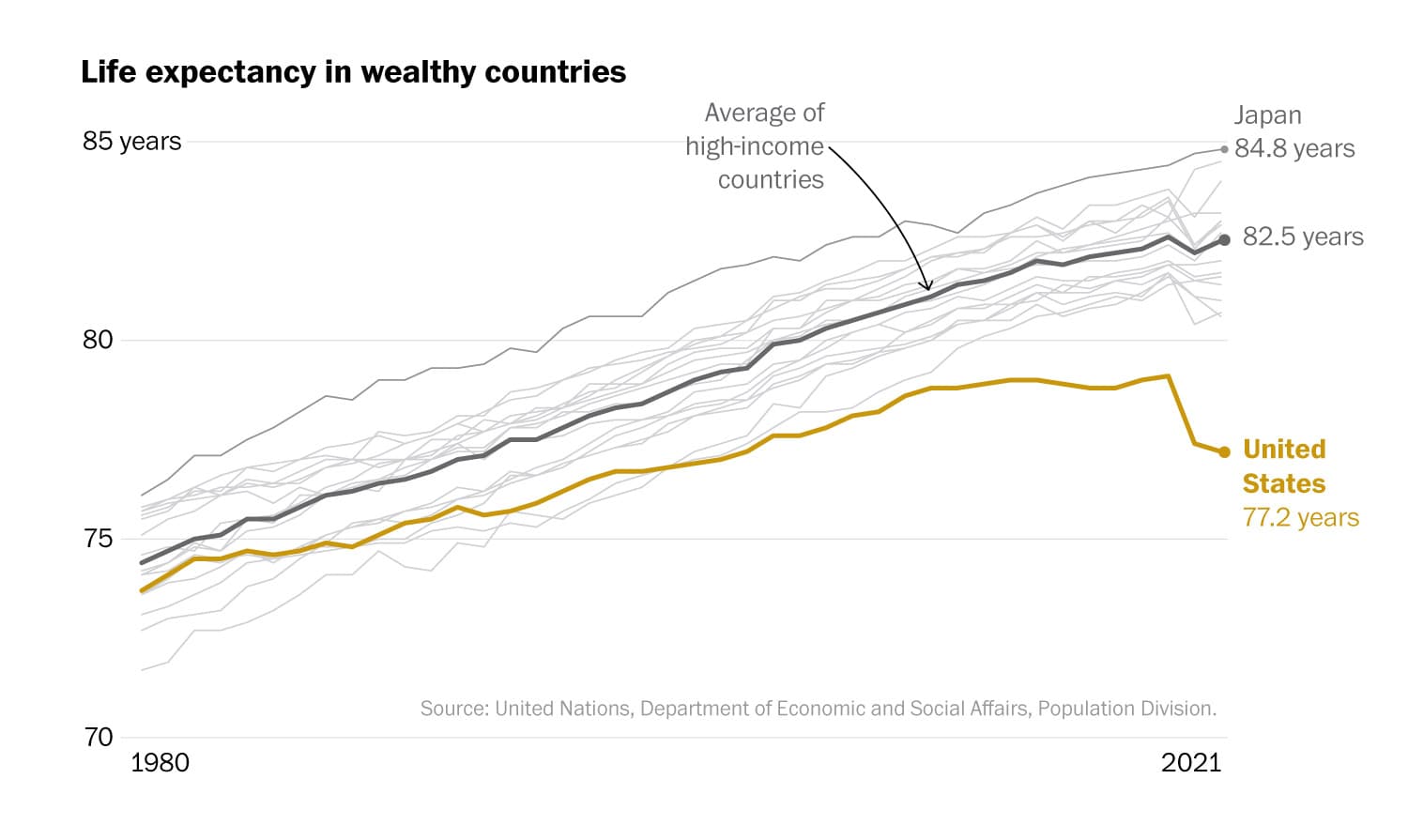U.S. Life Expectancy Lags Peers by Over 4 Years, Elevated Accident and Homicide Rates Among Key Factors

The United States' life expectancy in 2023 stood at 78.4 years, a significant 4.1 years lower than the average of comparable wealthy nations, despite the U.S. far outspending its peers on healthcare. This persistent disparity is attributed to a complex array of factors, with higher rates of motor vehicle fatalities and homicides playing a notable role. Social media commentator "el gato malo" highlighted these issues, stating, "> americans drive a lot more than other nations and die (mostly instantly or beyond the reach of medical care) a lot in car crashes as a result. there's quite a lot more murder in the US."
Data indicates that motor vehicle accidents are considerably more prevalent in the U.S. than in most other rich countries, with many nations experiencing at least 50% fewer road deaths. These fatalities often involve younger individuals, which disproportionately impacts overall life expectancy calculations. The high rate of driving and subsequent accidents in the U.S. is a consistent contributor to the nation's lower longevity compared to its developed counterparts.
Similarly, the U.S. maintains a significantly higher homicide rate than any other wealthy nation. According to research, homicide victims are frequently young, further depressing the average life expectancy. While the tweet suggests that controlling for these two factors would elevate U.S. life expectancy to among the best, comprehensive analyses reveal a broader spectrum of challenges.
Beyond traffic accidents and homicides, other factors contribute to the U.S. life expectancy gap. These include higher rates of drug overdoses, particularly from opioids, and elevated rates of obesity and suicides compared to peer countries. The U.S. also faces challenges with infant and maternal mortality, which are higher than in most other rich nations, and significant socioeconomic inequalities that impact health outcomes.
Despite the U.S. spending nearly double per capita on healthcare compared to other large, wealthy nations, this expenditure has not translated into superior health outcomes. The lack of universal access to health insurance for a segment of the population, coupled with high out-of-pocket costs even for insured individuals, further exacerbates health disparities. These multifaceted issues collectively explain why the U.S. continues to trail its peers in life expectancy.